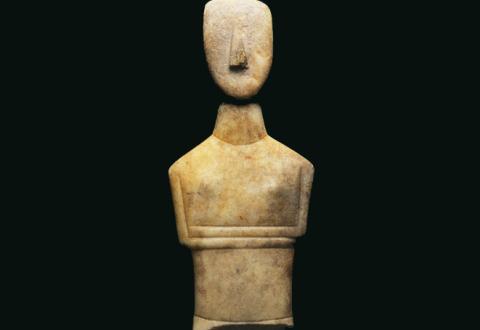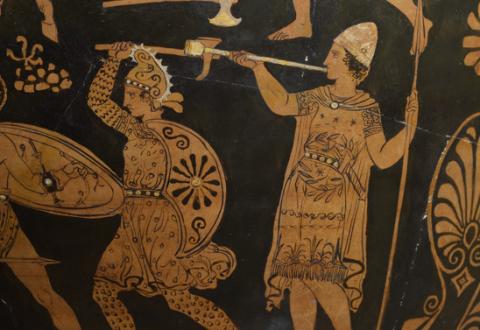
Greece
The Greek collection is centered around a remarkable series of vases, arranged chronologically from the Neolithic period to the era of the Hellenistic rulers. These utilitarian objects - wine vessels, jewellery boxes, funerary offerings, and more - are often decorated with scenes reflecting military life, camaraderie and drinking at the symposium, marriage ceremonies, or the daily lives of women in the gyneceum. Visitors can also follow processions of Greek gods and heroes, from Athena to Zeus, including Heracles and Theseus battling the Minotaur.
The begin
The first section offers a panorama of the societies that developed on Cyprus over the centuries, alongside the earliest cultures of mainland Greece: Cycladic, Minoan, and Mycenaean arts. The rise of the Greek city and its development during the Geometric, Orientalizing, and Archaic periods (8th–6th centuries BCE) are explored through the cities and regions of Athens, Corinth, Sparta, Boeotia, Ionia, and more.

Archaic and classical Athens
Athenian vases from the 6th and 5th centuries BCE take pride of place in the collection, including famous examples such as Douris’s kantharos and Smikros’s stamnos. They are grouped thematically while respecting chronological order. The utensils and stages of the banquet are described in detail, bringing the Athenians vividly to life: men hunt, practice sports, and go to war, while women converse, adorn themselves, and care for children.
Funerary practices are also depicted. When a family member dies, the deceased is laid on a funeral bed, surrounded by mourners, and farewelled by relatives...
Athenian vases from the 6th and 5th centuries BCE take pride of place in the collection, including famous examples such as Douris’s kantharos and Smikros’s stamnos. They are grouped thematically while respecting chronological order. The utensils and stages of the banquet are described in detail, bringing the Athenians vividly to life: men hunt, practice sports, and go to war, while women converse, adorn themselves, and care for children.
Funerary practices are also depicted. When a family member dies, the deceased is laid on a funeral bed, surrounded by mourners, and farewelled by relatives. The body is then taken to the necropolis to be either buried or cremated, placed in a container with various objects that are sometimes ritually destroyed. The grave is marked by a monument, with funerary slabs, vases, marble steles, and terracotta tiles illustrating the complexity of the rituals.

Southern Italy
Greek cities in southern Italy adopted the Attic red-figure technique and adapted it to local styles. This region produced rich, refined cultures, such as Taranto. A highlight in the Museum’s collection is an Apulian volute crater depicting the apotheosis of Heracles.

The Hellenistic period
During the Hellenistic era, stone, glass, and ceramic objects reflect the evolving sensibilities of the eastern Mediterranean. Bronze and terracotta figurines offer diverse representations of the human body, from idealized to deformed forms. Special attention is given to the Greek kingdom of Egypt, ruled by the Ptolemies from Alexandria, highlighting cross-cultural exchanges and artistic innovation.

Contact
- Natacha Massar: n.massar@kmkg-mrah.be